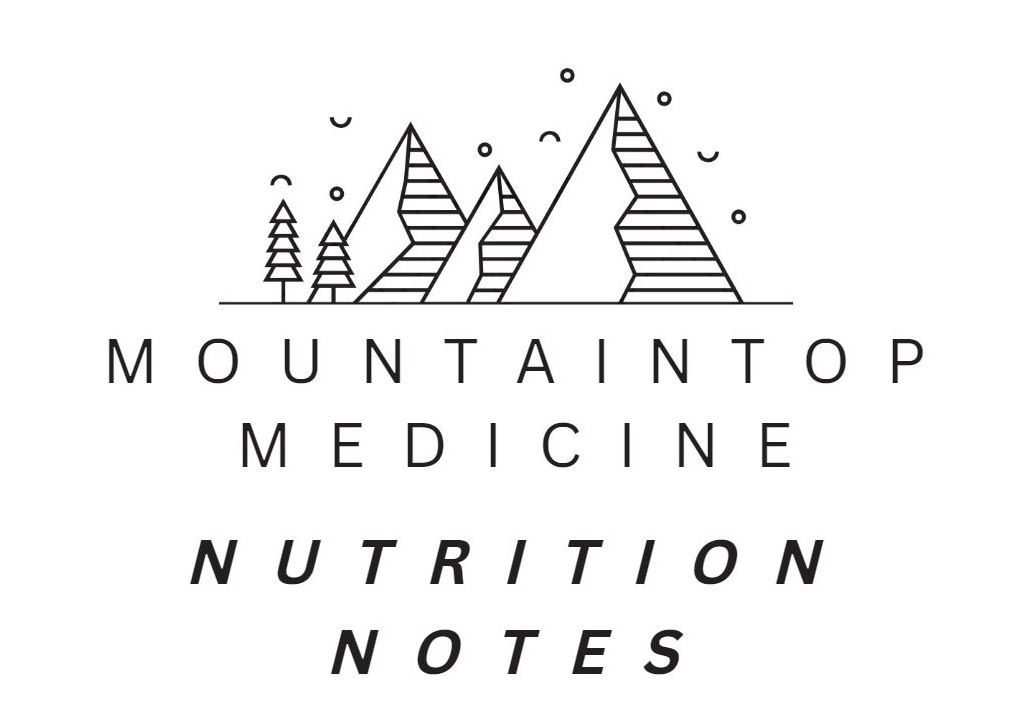Mountaintop Medicine: Nutrition Notes — The Low-Down on Dysphagia

Chewing and swallowing issues, also known as dysphagia, refer to the difficulties in eating and swallowing. These challenges can occur at various stages- from taking food into the mouth to moving it down the throat and into the esophagus.
There are three types of dysphagia:

Leah Gardner, EPH Registered Dietitian
Oral Phase Dysphagia
· Occurs during the initial stages of eating.
· Involves challenges in chewing, manipulating, and forming a cohesive food bolus.
· Symptoms may include coughing, choking, or food pocketing in the mouth.
Pharyngeal Phase Dysphagia
· Involves the movement of food from the mouth to the throat.
· Difficulties in triggering the swallowing reflex, coordinating muscle movements, and preventing food or liquid from entering the airway.
· Symptoms may include coughing, choking, or a sensation of food getting stuck in the throat.
Esophageal Phase Dysphagia
· Occurs as food moves through the esophagus to the stomach.
· Challenges in the smooth passage of food due to narrowing, spasms, or other structural abnormalities.
· Symptoms may include pain or discomfort during swallowing, regurgitation, or heartburn.
Dysphagia can be caused by a multitude of neurological conditions such as stroke, Parkinson’s Disease, and multiple sclerosis, as well as tumors, gastroesophageal reflux disease (GERD), age-related changes in muscle strength and coordination, and certain medications that affect swallowing function. You are more at risk of developing dysphagia if you are 75 years or older, have a neurological disorder, have head or neck cancer, or have undergone radiation therapy.
These chewing and swallowing issues can have a significant impact on nutrition and hydration because they can lead to inadequate intake of foods and fluids. Therefore, malnutrition and dehydration can be common problems for individuals with dysphagia.
When dealing with chewing and swallowing issues, there are several nutrition strategies and therapies that can be helpful:
1. Texture Modifications:
· Adjust food textures and fluid consistency (pureed, minced, or soft foods and thickened fluids) to align with your swallowing ability.
· For example, mashed foods (like mashed potatoes or baked squash) are easier to swallow.
· Shredded raw vegetables or fruits can be incorporated into salads, gelatins, or stir-fry dishes.
2. Moistening Techniques:
· Use gravies, sauces, broths, butter, margarine, mayonnaise, or sour cream to moisten foods.
· Moistened foods are easier to chew are swallow.
3. Adaptive Feeding Practices:
· Cut food into small bites if needed.
· Sit upright in a chair at 90 degrees as often as possible when you eat.
· Chew food slowly and thoroughly before swallowing.
· Remember to swallow during meals.
· Try swallowing multiple times.
· Consider using adaptive feeding equipment.
4. Oral Care:
· Regular dental care is essential for maintaining oral health and helps reduce the risk of aspiration pneumonia.
· Exercises to strengthen swallowing muscles.
5. Monitoring Nutrition and Hydration:
· Keep track of your food intake and hydration status.
· If you are on a dysphagia or fluid consistency diet, be sure to receive close monitoring at mealtimes by a family member, friend, or caregiver.
· Be sure to eat small, frequent meals (three meals and three snacks per day) to ensure adequate nutrition and hydration.
· Choose energy- and protein-dense foods.
If you or someone you know is experiencing chewing or swallowing issues, it may be time to consult a nutrition professional. I offer outpatient nutrition counseling and education services at Estes Park Health. If you are interested, contact your healthcare provider for a referral. If you have any questions or if there are any nutrition-related topics that you would like me to discuss here on Nutrition Notes, please reach out at LGardner@EPH.org.


